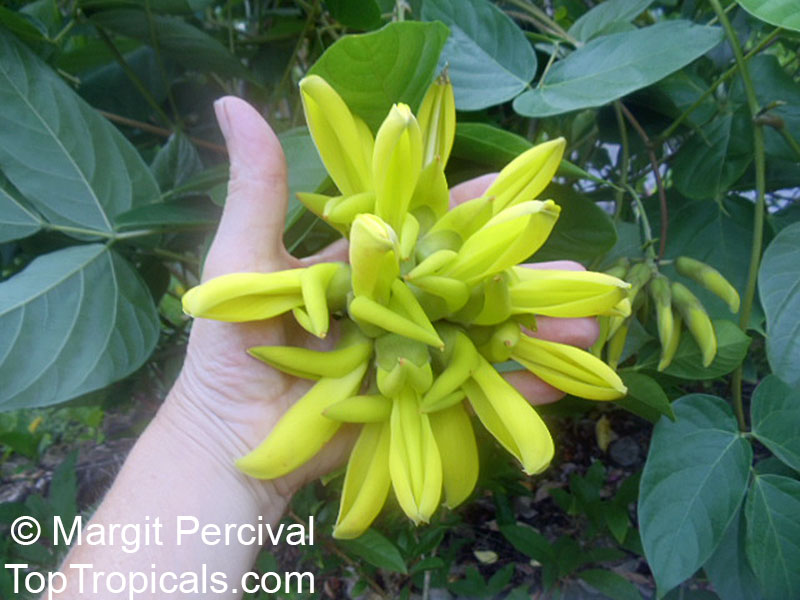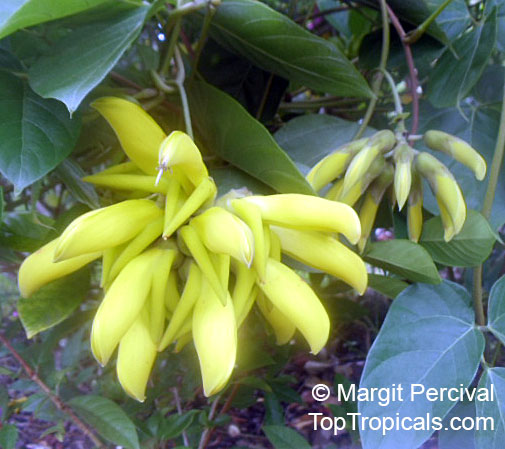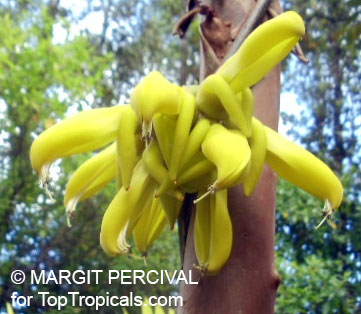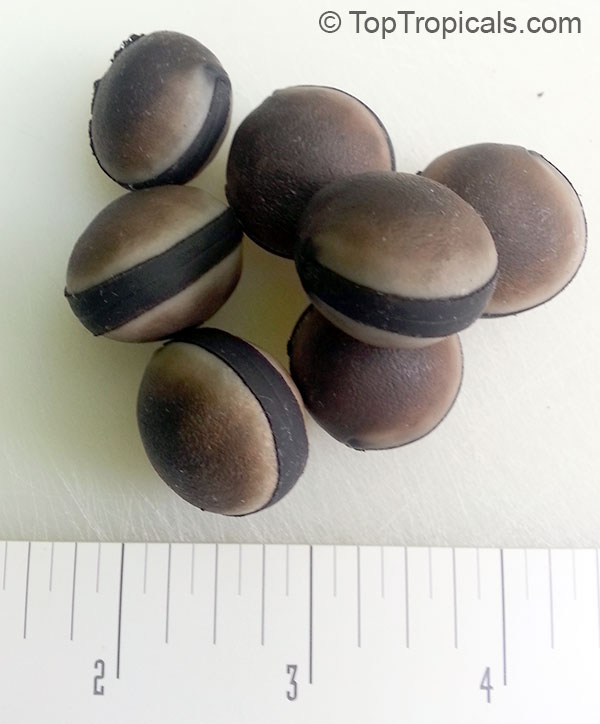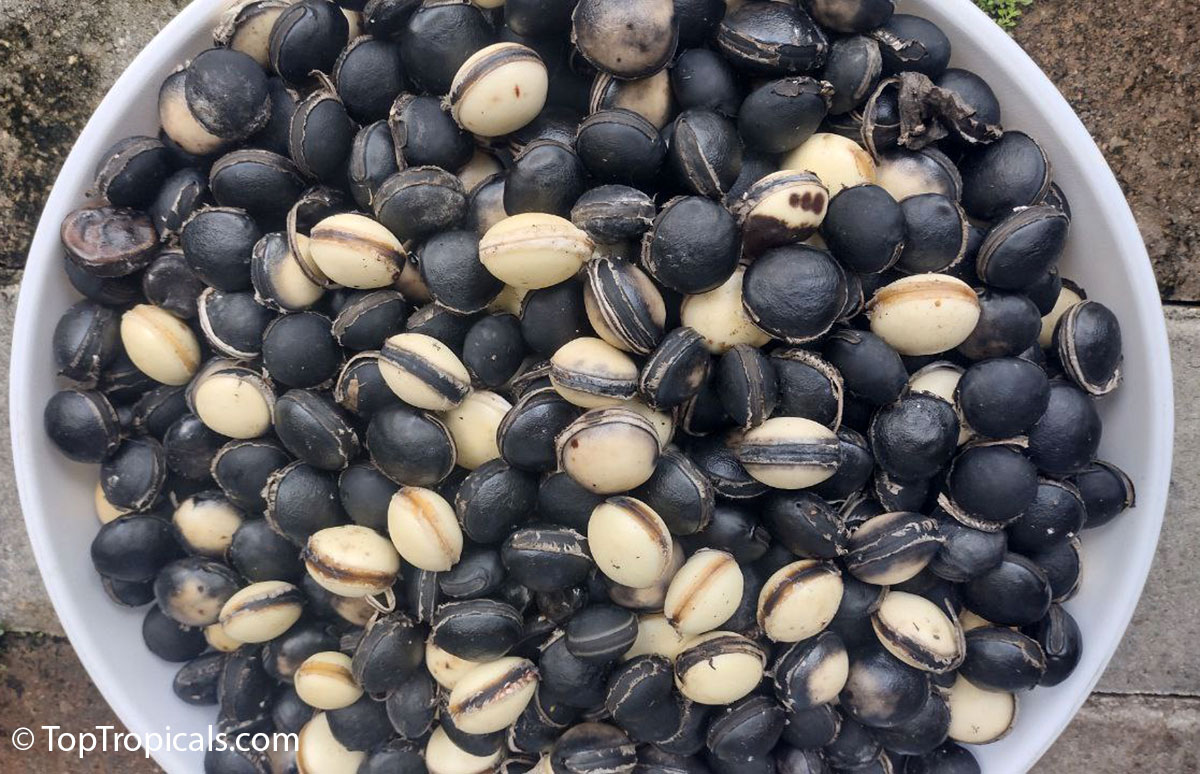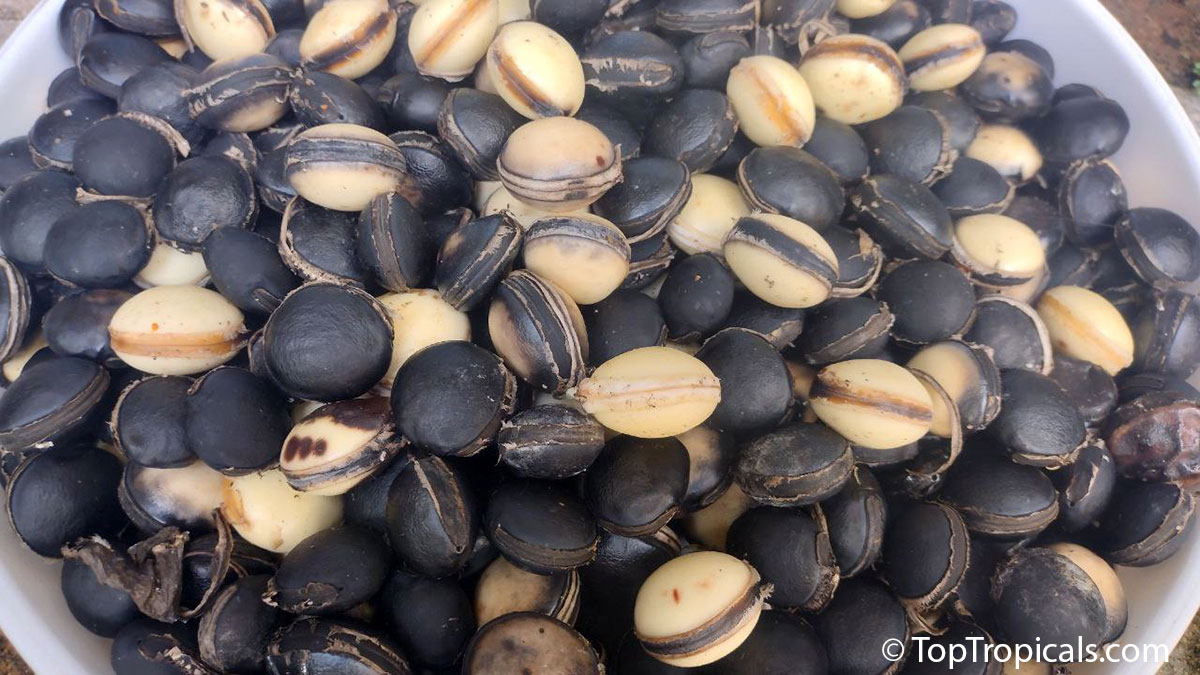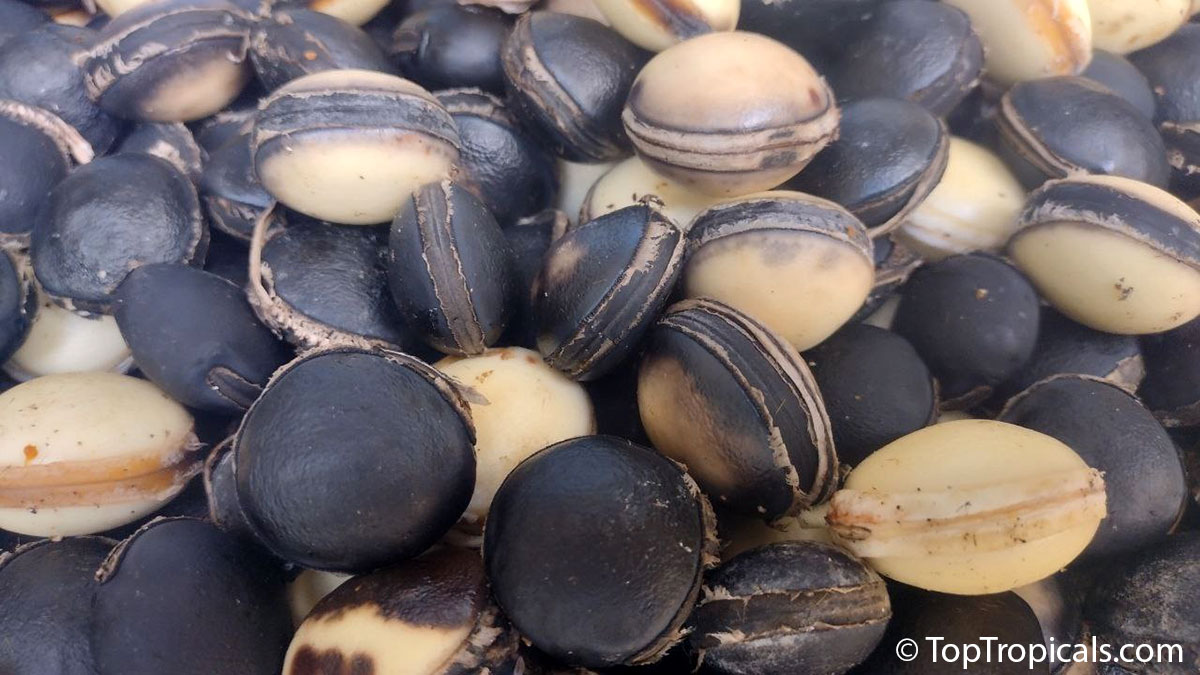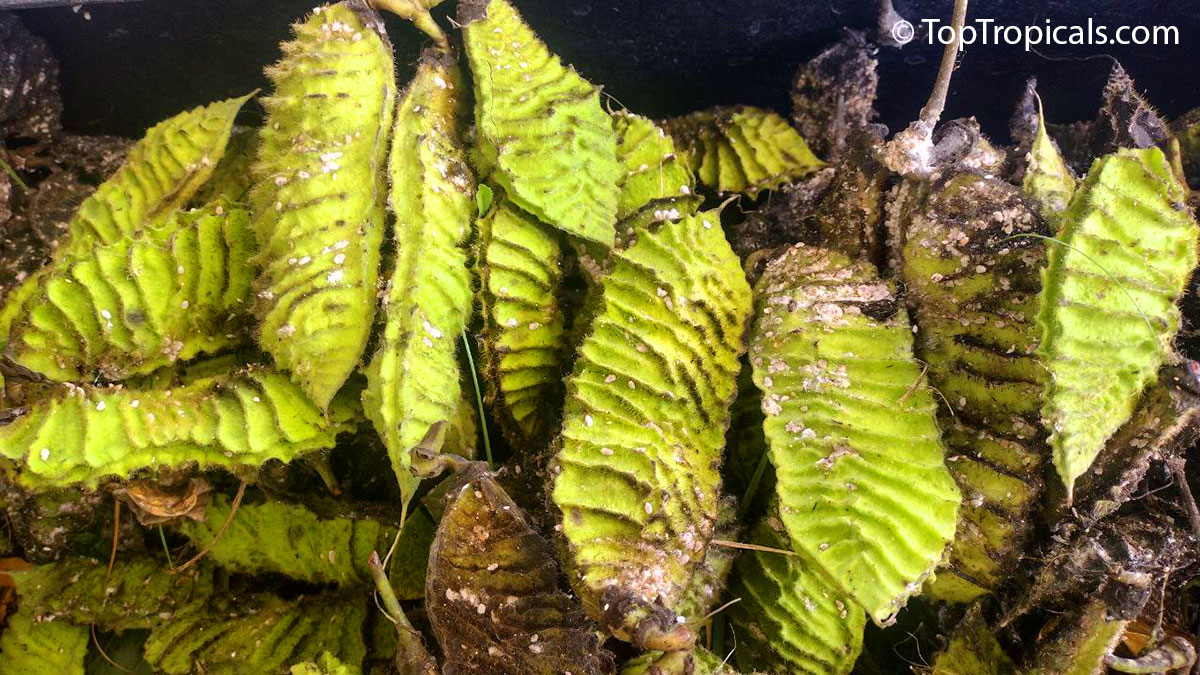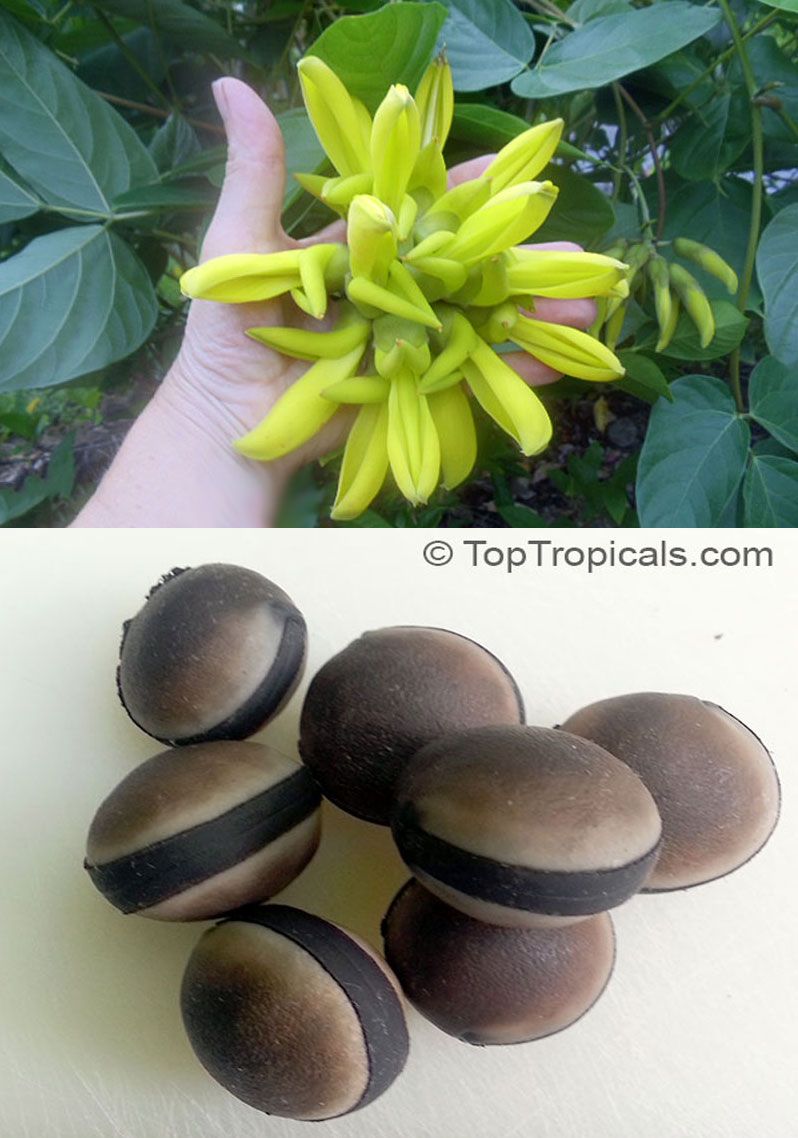Mucuna sloanei (Yellow Jade Vine)
Top Tropicals Plant Encyclopedia
Botanical name: Mucuna sloanei
Common names: Yellow Jade Vine, Horse Eye, Brown Hamburger Bean, Ojo de Buey, True Sea-Bean
Family: Fabaceae
Subfamily: Faboideae
Origin: Central and South America









Mucuna sloanei is a fast-growing and undemanding vine. It thrives in full sun or partial shade and only needs regular water. They need support or something to climb on, like a trellis, fence, arbor, or pergola. The woody stems can grow up to 35 ft long and can be used to hide unsightly fences or walls. It produces exceptionally fragrant yellow and orange flowers throughout the warm months of summer and are attractive to both butterflies and hummingbirds. The flowers give way to what is known as "yellow jade" beans which ripen from green to black in the fall. The long, rope-like stalk hangs below the forest canopy where night-flying bats can easily access the fragrant blossoms.
The vine produces pods which contain several beans that are extremely buoyant and well adapted for ocean dispersal. Known to beachcombers around the world and commonly called "sea beans", they often wash ashore on the beaches of distant continents and tropical islands. This one is the most common species of sea bean that washes ashore on beaches of the southeastern United States.
Mucuna sloanei has ethnomedical uses in South America and is popular for seaside plantings as it is salt tolerant.
The name Brown Hamburger Bean is because of the beautiful seeds (looking like little hamburgers) that are often collected and polished by natives and made into lovely necklaces, bracelets and other handicraft items.
Mucuna sloanei can be grown in USDA Zone 9-11. Growing in a pot requires frequent watering, regular re-potting to ensure it has enough space to stretch its roots and warm sun preferably, but it can survive in semi-shade for a short time. If you live in cold regions, it is best to bring the pot indoors for winter. Water the planter uniformly and do not let any part of soil become dry. Move the container to protected area to shield it against bear winters and cold spells and keep it in a warmer temperature.
The seeds are poisonous and contain L-DOPA and other potentially toxic substances.
Similar plants: Mucuna sloanei (Yellow Jade Vine)
Ordering seeds info
RECOMMENDED SUPPLIES:
Seed Germination Mix #3, professional grade
SUNSHINE-Epi - Seeds and cuttings booster
SUNSHINE Bombino - Young Plant Booster
Last one
